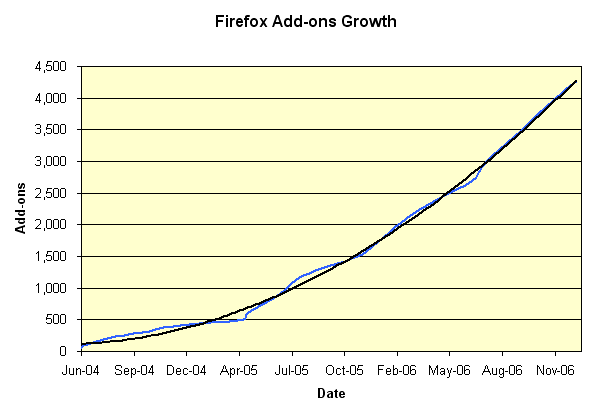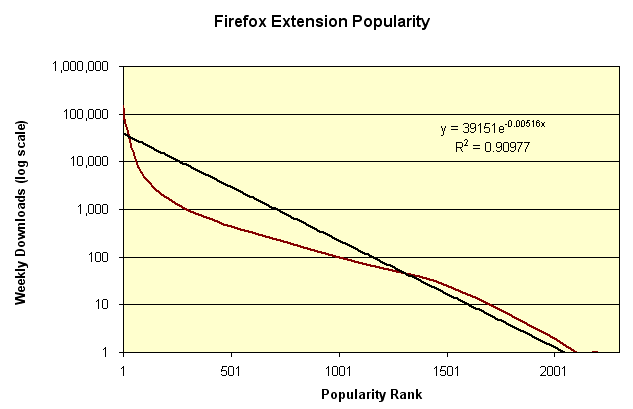 A New Generation of Browser Wars is Brewing
A New Generation of Browser Wars is Brewing
Since its release in early 2004 (with version 0.8), Firefox has achieved phenomenal success, passing the 200 million download mark in late July 2006 and now estimated at the 282 million level or so (you can see or get a copy of the counter from Spread Firefox). Though there are seasonality factors and growth, Firefox downloads are now on the order of 3.5 million to 4 million per week.
After creaming Netscape in the browser wars of the late 1990s, it is widely acknowledged that Microsoft left Internet Explorer to languish for about five years or so, giving the opening for Firefox (and earlier Opera, though at much lower market share) to gain a toehold with fresh innovations. Some of the innovative hallmarks of early Firefox were tabbed browsing, broad operating system (OS) compatibility (Linux, Windows, Mac), constant improvements, and full and complete adherence to open standards and code access.
Though, of course, downloads by no means translate into actual users (many download and then abandon and many downloads are for version upgrades), nonetheless various independent market research firms estimate steady market share gains for Firefox. According to a report last week in ComputerWorld:
Propelled by the release of its Version 2.0 in October, the free Firefox Web browser saw almost a 50% increase in use during 2006, according to one Web measurement firm. The open-source Firefox browser was used by 14% of computers online at the end of 2006, according to Aliso Viejo, Calif.-based Net Applications. That was 46% higher than its 9.6% share of the browser market at the beginning of the year.
General consensus views are that actual Firefox market share is on the order of 12% to 15% currently.
Microsoft is fighting back, with its recent release of IE v 7 adding tabbed browsing and many of the innovative features first brought by Firefox. (This has also resulted in some hilarious send-ups, such as this mock MS site touting the purchase of Firefox). If nothing else, Firefox has helped add new competitive juice to the browser market. But, there is an even more important stealthy factor underlying these trends that bodes very well indeed for Firefox’s future and ongoing threats to Microsoft.
Stealth Extensions Growth
The Mozilla team when initiating Firefox adopted a very prescient stance: to completely open up, modularize and simplify the architecture and to publish clear and easy guidelines for extending it. This stance enabled a lean-and-mean initial browser download but more importantly provided an inviting framework for extending the system through new themes and functionality. These add-ons initially started quite slowly and first consisted of infrastructure extensions. Then, as Firefox code and documentation matured, a broader group of developers began to also see this farsighted vision and began contributing their own extensions.
Today, Firefox has just passed the 2,200 mark for extensions as maintained by its own add-on directory service. This growth is accelerating, as my figure constructed from Mozilla’s online data shows:

My own research suggests only about 90% of available extensions are listed officially on the Mozilla add-on site. The remaining are company- or Web-site-specific extensions or are experimental ones maintained (often largely) by universities. It is perhaps likely that there are about 3,000 or so extensions (separate from another 1,500 or so themes) currently extant.
What is most notable with recent trends is the growth — the number of extensions has grown by what I estimate to be 123% in the past twelve months (based on Mozilla directory data) — and the comprehensiveness and sophistication of the new offerings. Extensions are now being added at about the rate of 10 per day! and in every conceivable subject area.
As with other aspects of the Internet, extension popularity follows the typical power curve. The most popular of the extensions, such as ad blockers or video download assistants, can reach 150,000 per week or more. Quite a few extensions exceed millions in total downloads and some with many version upgrades exceed 10 to 20 million downloads. The distribution by rank popularity and downloads for these 2,200 extensions is shown in the figure below:

Again, using Mozilla data, extension downloads are on the order of 3 million per week, or nearly one extension per standard Firefox download. These extensions are growing in popularity and ubiquity and some users have documented adding 200 or more extension to their basic Firefox package. (Of course, such numbers are absurd per user, and rational means for managing and organizing multiple extensions are also emerging.) Indeed, I will shortly publish another list of about 30 extensions of specific benefit to semantic Web browsing and tasks. Extension bundles of benefit to every need and interest can easily be found.
The Role of the Browser as Platform
What is most compelling about these trends is the emerging centrality of the browser as the dominant software application in most users’ computing lives. This is part of the ongoing trend to Web OSs, as my earlier post on Parakey noted (whose founders are Firefox developers with a strong background in XUL). Firefox is truly notable for the beauty and clean design as a platform for hosting Internet applications. Using XML, XUL and its chrome files, virtually every aspect of the Firefox platform is open to extension. The Javascript examples and the fact that many of the available extensions are also fully available in source code with non-limiting open source licenses provides many examples and exemplars for still further extension innovation.
So, while Microsoft may be able to match browser-wide feature innovations such as tabbed browsing, unless it chooses as well to open the IE platform to a similar extent (granted a difficult task given the inherent proprietary architecture), I believe Microsoft will be hard pressed to maintain its dominant browser market share under assault from the global developer community. Not only are we seeing the democratization of software development through open source, we are also going to increasingly see the democratization of programming as non-programmers in the conventional sense embrace the tools and techniques being innovated by the likes of the Firefox community.





